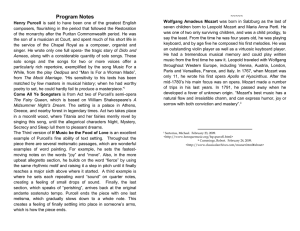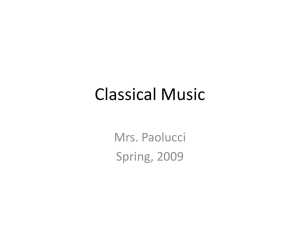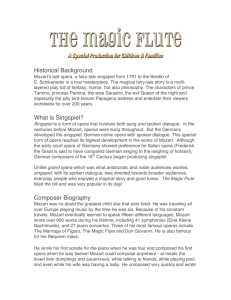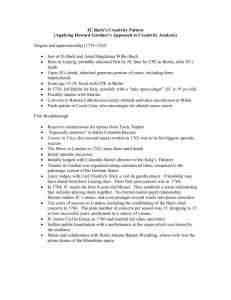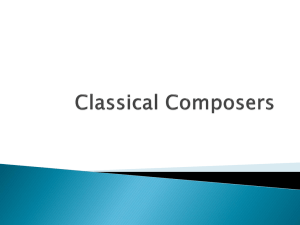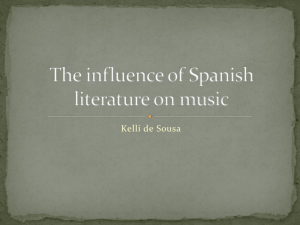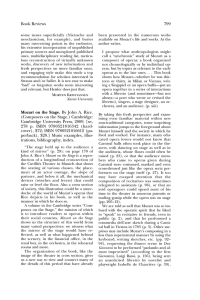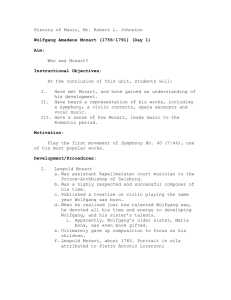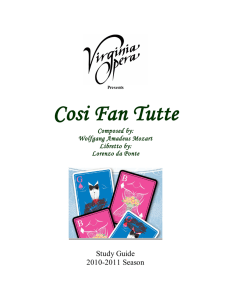C T
advertisement
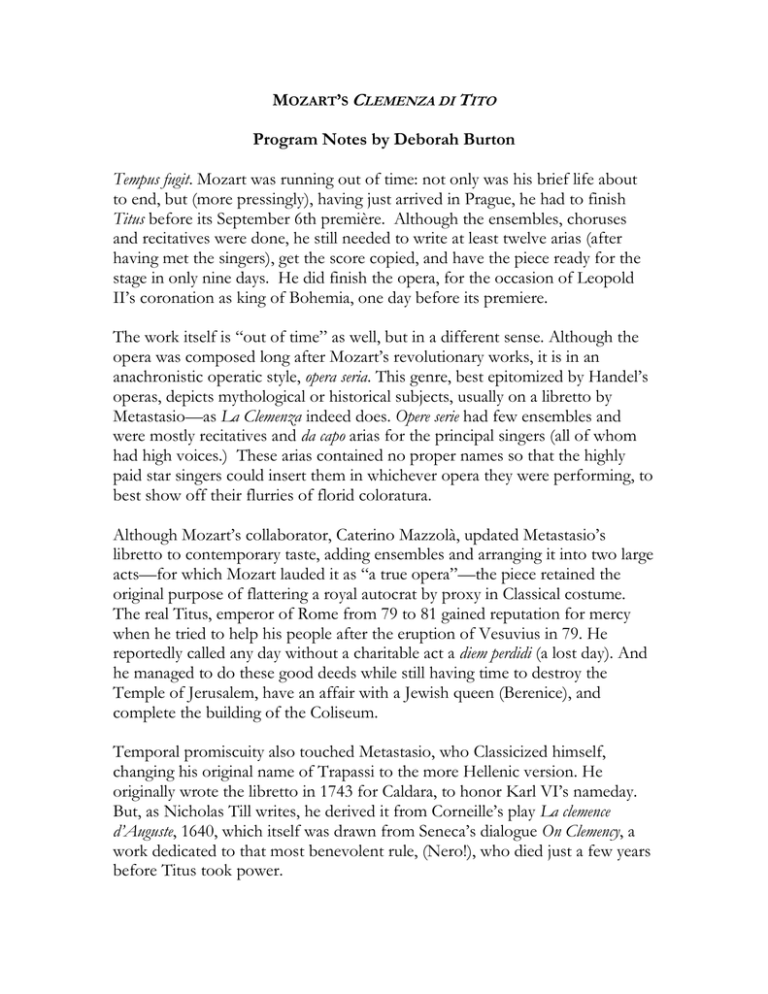
MOZART’S CLEMENZA DI TITO Program Notes by Deborah Burton Tempus fugit. Mozart was running out of time: not only was his brief life about to end, but (more pressingly), having just arrived in Prague, he had to finish Titus before its September 6th première. Although the ensembles, choruses and recitatives were done, he still needed to write at least twelve arias (after having met the singers), get the score copied, and have the piece ready for the stage in only nine days. He did finish the opera, for the occasion of Leopold II’s coronation as king of Bohemia, one day before its premiere. The work itself is “out of time” as well, but in a different sense. Although the opera was composed long after Mozart’s revolutionary works, it is in an anachronistic operatic style, opera seria. This genre, best epitomized by Handel’s operas, depicts mythological or historical subjects, usually on a libretto by Metastasio—as La Clemenza indeed does. Opere serie had few ensembles and were mostly recitatives and da capo arias for the principal singers (all of whom had high voices.) These arias contained no proper names so that the highly paid star singers could insert them in whichever opera they were performing, to best show off their flurries of florid coloratura. Although Mozart’s collaborator, Caterino Mazzolà, updated Metastasio’s libretto to contemporary taste, adding ensembles and arranging it into two large acts—for which Mozart lauded it as “a true opera”—the piece retained the original purpose of flattering a royal autocrat by proxy in Classical costume. The real Titus, emperor of Rome from 79 to 81 gained reputation for mercy when he tried to help his people after the eruption of Vesuvius in 79. He reportedly called any day without a charitable act a diem perdidi (a lost day). And he managed to do these good deeds while still having time to destroy the Temple of Jerusalem, have an affair with a Jewish queen (Berenice), and complete the building of the Coliseum. Temporal promiscuity also touched Metastasio, who Classicized himself, changing his original name of Trapassi to the more Hellenic version. He originally wrote the libretto in 1743 for Caldara, to honor Karl VI’s nameday. But, as Nicholas Till writes, he derived it from Corneille’s play La clemence d’Auguste, 1640, which itself was drawn from Seneca’s dialogue On Clemency, a work dedicated to that most benevolent rule, (Nero!), who died just a few years before Titus took power. The choice of the Clemenza libretto for Leopold’s coronation was not surprising: it had been set by many composers, as Till writes, as an “obligatory vehicle for those engaged in the flattery of numerous petty monarchs of Germany.” What seems anachronistic, though, is that this retrogressive work— in effect, propaganda for a benevolent monarchy—would be selected for the coronation of Leopold II who, like his brother Joseph II, was an enlightened republican. (Joseph can even be quoted as proclaiming “All men are equal at birth.”) Certainly many Enlightenment souls were not against the idea of a benevolent ruler (think Sarastro) But in the prevailing view, monarchical mercy placed the ruler above the law, rather than in a position of upholding it. The answer to the riddle may lie in who was responsible for this production: not the Imperial Court, where Mozart had fallen out of favor, but by the Bohemian Estates. This representative body of the Bohemian aristocracy was miffed that Leopold and his ruling family had revised the tax code, hitting them hard in the purse. In effect, then, this paean to the ruler was also a swipe at his liberal leadership. But the theme of the merciful ruler could be updated to any era: shall we try Downton Abbey in togas?

